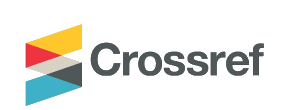Does university prepare students for employment? Alignment between graduate attributes, accreditation requirements and industry employability criteria
DOI:
https://doi.org/10.21153/jtlge2019vol10no1art790Keywords:
employability, graduate attributes, accreditation, employment, psychology, nursing, educationAbstract
One of the primary goals of tertiary education is to prepare students for employment. There is debate as to whether university courses adequately provide students with 21st century workplace skills (Kaminski, Switzer, & Gloeckner, 2009; Kivunja, 2014). In a rapidly changing workforce, institutions must constantly adapt to maintain the practical utility of their courses. A thematic analysis was conducted to explore the degree of alignment between graduate attributes, accreditation requirements and industry employability criteria in nursing, psychology and education courses at an Australian University. Graduate attributes were obtained from the Course Approval and Management System. Relevant accreditation requirements were sourced from the respective bodies. A search of advertised job positions for the three discipline fields was conducted from a popular job-search engine (SEEK) to ascertain employability criteria. This analysis identified clear alignment between the university’s graduate attributes and the standards articulated by accreditation bodies for psychology, nursing and education. However, there were differences between graduate attributes and the employability criteria identified by job searches across the three disciplines. Analysis of the employability criteria suggest that employers seek and prioritise graduates who possess practical competencies and 21st century skills such as problem solving and communication. However, there was little to no mention of cultural understandings and attitudes towards inclusion and diversity, both a core graduate attribute and an aspect of professional accreditation. The findings of this study may inform the development of future graduate attributes that better reflect preparedness for the workforce. Alternatively, a reflection on graduate attributes and professional accreditation criteria might produce job advertisements that better reflect work contexts in an increasingly diverse society.
Metrics
References
ANECA (2007). 2007). Proyecto Réflex. Informe Ejecutivo. El profesional flexible en la sociedad de lconocimiento. http://www.aneca.es/var/media/151847/ informeejecutivoaneca_jornadasreflexv20.pdf
Australian Business Report (2017). The top ten Australian websites for jobs (25/01/2017). http://www.australianbusinessreport.com.au/
Australian Government Tertiary Education Quality and Standards Agency (TEQSA). (2016). TEQSA Annual Report 2015-2016. Australian Government Tertiary Education Quality and Standards Agency. Australian Government Tertiary Education Quality and Standards Agency. https://www.teqsa.gov.au/for-providers/resources/teqsa-annual-report-2015-16
Australian Institute for Teaching and School Leadership (2016). Guidelines for the accreditation of initial teacher education programs in Australia. Melbourne: AITSL.. Available from: https://www.aitsl.edu.au/docs/default-source/initial-teacher-education-resources/guidance-for-the-accreditation-of-initial-teacher-education-in-australia.pdf
Australian Nursing and Midwifery Accreditation Council (2012). Registered Nurse Accreditation Standards. Available from: https://www.anmac.org.au/sites/default/files/documents/ANMAC_RN_Accreditation_Standards_2012.pdf
Australian Psychology Accreditation Council (2010). Rules for Accreditation and Accreditation Standards for Psychology Courses. Melbourne: Australia. Available from: https://www.psychologycouncil.org.au/sites/default/files/public/Standards_Rules_2010_Jun_APAC_Accreditation_for%20_Psychology_Courses_v10.pdf
Arcodia, C., & Barker, T. (2002). A review of web-based job advertisements for Australian event management positions. Journal of Human Resources in Hospitality & Tourism, 1(4), 1–18, https://doi.org/10.1300/J171v01n04_01
Bath, D., Smith, C., Stein, S., & Swann, R. (2004). Beyond mapping and embedding graduate attributes: bringing together quality assurance and action learning to create a validated and living curriculum. Higher Education Research & Development, 23(3), 313–328.
Braun, V., & Clarke, V. (2006). Using thematic analysis in psychology. Qualitative Research in Psychology, 3(2), 77–101. https://doi.org/10.1191/1478088706qp063oa
Bridgstock, R. (2009). The graduate attributes we’ve overlooked: Enhancing graduate employability through career management skills. Higher Education Research & Development, 28(1), 31–44. https://doi.org/10.1080/07294360802444347
Bowen, G. A. (2009). Document analysis as a qualitative research method. Qualitative Research Journal, 9(2), 27-40, https://doi.org/10.3316/QRJ0902027
Burton, L., Westen, D., & Kowalski, R. (2016). Psychology, 4th Australian and New Zealand Edition. NZ: John Wiley & Sons.
Cranmer, S. (2006). Enhancing graduate employability: Best intentions and mixed outcomes. Studies in Higher Education, 31(2), 169–184. https://doi.org/10.1080/03075070600572041
Fernández, G., López-Miguens, M. J., & Lampón, J. F. (2014). Spanish universities and their Involvement with the employability of graduates. Revista Española de Investigaciones Sociologicas, (146), 23–45, https://doi.org/10.5477/cis/reis.146.23
Caballero, C., Walker, A., & Fuller-Tyszkiewicz, M. (2011). The Work Readiness Scale (WRS): Developing a measure to assess work readiness in college graduates. Journal of Teaching and Learning for Graduate Employability, 2(2), 41–54, https://doi.org/10.21153/jtlge2011vol2no1art552
leaders. Australian Institute for Teaching and School Leadership (AITSL).










